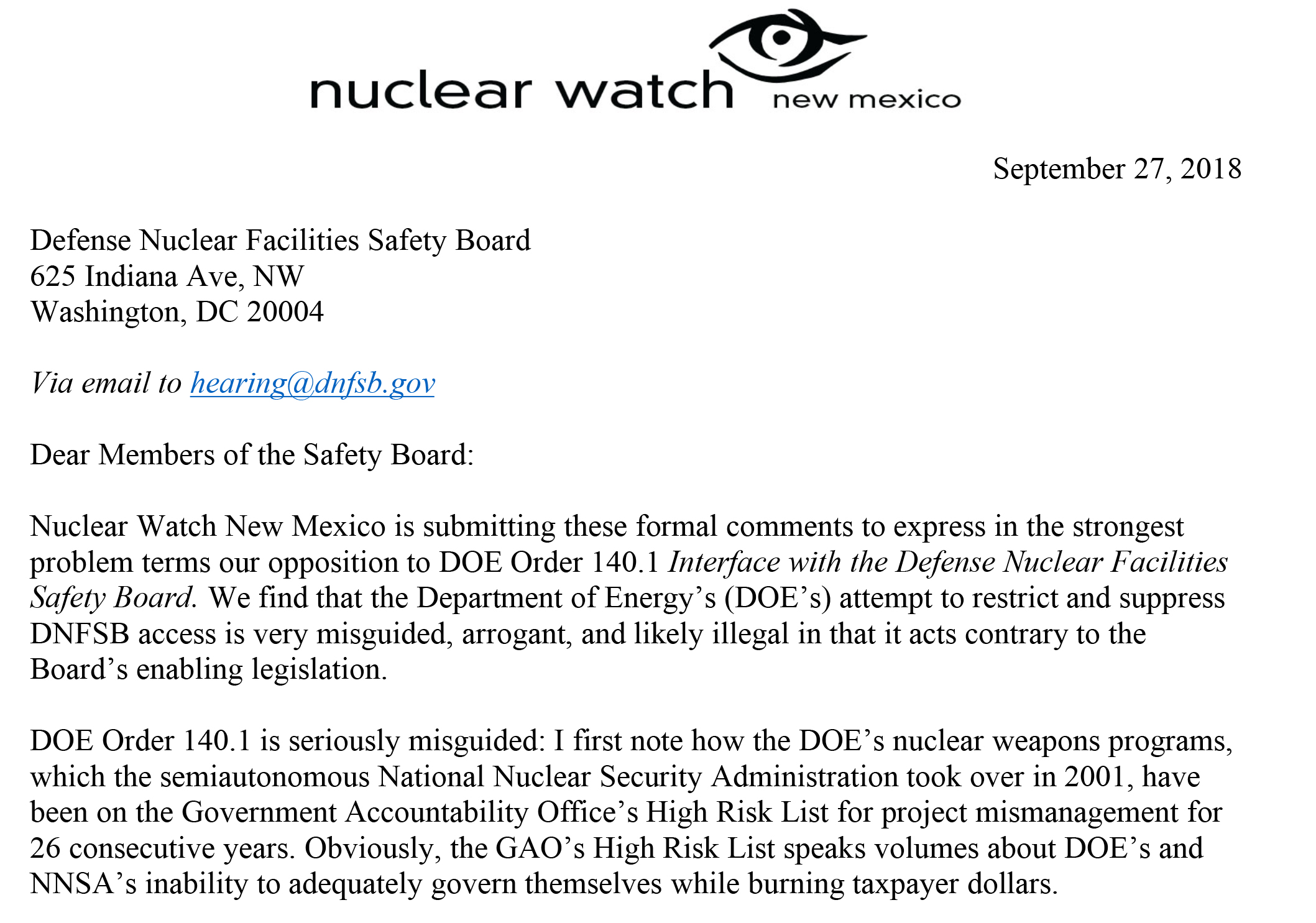CBO quotes in italics.
First, some policy matters not addressed in the CBO study.
Driving the astronomical expense of modernization that the CBO reports on is the fact that instead of maintaining just the few hundred warheads needed for the publicly claimed policy of “deterrence,” thousands of warheads are being refurbished and improved to fight a potential nuclear war. This is the little known but explicit policy of the U.S. government. As a top-level 2013 Defense Department policy document put it, “The new guidance [in Obama’s 2010 Nuclear Posture Review] requires the United States to maintain significant counterforce capabilities against potential adversaries. The new guidance does not rely on a “counter-value’ or “minimum deterrence” strategy.” [1]
A new Nuclear Posture Review under President Trump is currently scheduled for release in Spring 2018. Among other things, it is expected to overturn the 2010 Nuclear Posture Review’s prohibition against new-design nuclear weapons, possibly promoting more usable “mini-nukes”, and to shorten the lead-time necessary to resume full-scale nuclear weapons testing. Any changes implemented by Trump’s Nuclear Posture Review may well add to the CBO’s new cost estimate.
Nuclear weapons “modernization” is a Trojan horse for the indefinite preservation and improvement of the US nuclear weapons arsenal, contrary to the 1970 Nuclear NonProliferation Treaty and the nuclear weapons ban treaty passed this last June by 122 nations at the United Nations (for which the International Campaign to Abolish Nuclear Weapons was awarded the Nobel Peace Prize). Contrary to those treaties, all eight existing nuclear weapons powers are now modernizing their nuclear stockpiles, while the newest ninth power North Korea is engaged in heated, bellicose rhetoric with President Trump. But clearly the astronomical expense of US nuclear weapons modernization is not needed to deal with North Korea.
Ironically, “modernization” may actually undermine national security because the nuclear weapons labs (Los Alamos, Livermore and Sandia) are pushing radically new weapons designs that can’t be full-scale tested, or, alternatively, if they were to be tested would have severe international proliferation consequences. See House Armed Services Committee Chairman Max Thornberry’s recent remarks that perhaps the US needs to return to testing at
http://www.knoxnews.com/story/news/2017/10/09/national-defense-nuclear-security-tennessee-oak-ridge-national-lab/740612001/
The most prudent way to maintain stockpile safety and reliability would be to hew to the extensively tested pedigree of the existing stockpile while performing rigorous surveillance and well proven methods of maintenance, including the routine exchange of limited life components. As a 1993 Stockpile Life Study by the Sandia Labs concluded:
It is clear that, although nuclear weapons age, they do not wear out; they last as long as the nuclear weapons community (DOE and DOD) desires. In fact, we can find no example of a nuclear weapons retirement where age was ever a major factor in the retirement decision. (https://nukewatch.org/facts/nwd/Sandia_93_StockpileLife.pdf, parentheses in the original.)
While the 1993 Sandia Stockpile Life Study is obviously dated, it is still relevant because no new-design nuclear weapons have been manufactured since then (which may soon change). Further, the findings of that study have since been bolstered by subsequent expert independent studies (see, for example, https://nukewatch.org/facts/nwd/JASON_ReportPuAging.pdf and https://fas.org/irp/agency/dod/jason/lep.pdf).
CBO Costs
P.1 The Congressional Budget Office estimates that the most recent detailed plans for nuclear forces, which were incorporated in the Obama Administration’s 2017 budget request, would cost $1.2 trillion in 2017 dollars over the 2017–2046 period: more than $800 billion to operate and sustain (that is, incrementally upgrade) nuclear forces and about $400 billion to modernize them.
That planned nuclear modernization would boost the total costs of nuclear forces over 30 years by roughly 50 percent over what they would be to only operate and sustain fielded forces, CBO estimates. During the peak years of modernization, annual costs of nuclear forces would be roughly double the current amount. That increase would occur at a time when total defense spending may be constrained by long-term fiscal pressures, and nuclear forces would have to compete with other defense priorities for funding.
P. 2: Overall, CBO estimates that planned modernization would cost $399 billion through 2046…
P.3 : The rising costs of modernization would drive the total annual costs of nuclear forces, including operation and sustainment, from $29 billion in 2017 to about $50 billion through the early 2030s, CBO estimates. As most modernization programs reach completion, costs would gradually fall to around $30 billion a year in the 2040s.
First, these costs are not necessary, as implied in the policy section above, when well-known methods would prudently and faithfully maintain the stockpile. Moreover, these expenditures that the taxpayer is being compelled to bear could actually degrade national security. To further put the cost of “modernization” into perspective, the Congressional Research Service has estimated the total post-9.11 costs of the “Global War on Terrorism” at $1 trillion and all of World War II at $4 trillion. See https://fas.org/sgp/crs/natsec/RS22926.pdf
It is also roughly the same amount that the Trump Administration is beginning to push for in questionable missile defense technologies and tax cuts for the already rich, adding to uncertainties how the average American taxpayer can afford nuclear weapons “modernization”.
P. 20: Nuclear Weapons Laboratories and the Production Complex.
DOE operates a complex of design laboratories and production facilities that provide the engineering and scientific capabilities required to sustain the stockpile of nuclear weapons. Those capabilities include the following:
- Facilities to produce and process the nuclear materials and other specialized components used in nuclear weapons and weapons research;
- Basic scientific research and high-speed computer simulations to improve understanding of the dynamics of nuclear explosions and the aging of weapons;
- Research to develop and certify the processes used in maintaining nuclear weapons; and
- The infrastructure required to support those efforts.
In CBO’s estimation, the costs to DOE of those efforts would be $261 billion over the 2017–2046 period, or an average of about $9 billion per year, under the 2017 plan. Those costs do not include sustainment and LEP activities specific to particular weapon types; in CBO’s accounting, those costs have been included with the costs of their associated delivery systems. Projected costs also exclude DOE’s other nuclear-related activities, like nonproliferation efforts and environmental cleanup.
Unfortunately the CBO report gives little further detail on DOE costs. But do note that nonproliferation and cleanup programs will likely remain flat or be cut in order to help pay for “modernization”, and the pressure to do so will likely increase every year the deeper we get into modernization.
With respect to its reported DOE costs, CBO is essentially tracking the National Nuclear Security Administration’s (NNSA’s) annual budget category “Total Weapons Activities” minus the Life Extension Programs (LEPs). Total Weapons Activities had a FY 2018 Congressional Budget Request (CBR) of $10.2 billion. Of that, LEPs) were $1.74 billion, a $441.56 increase above FY 2017 (see FY 2018 NNSA budget request, p. 64.), and which will likely increase yet more.
To project future labs’ and production complex budgets, we can take the CBO’s $9 billion annually and add annual Life Extension Programs costs of around $2 billion for a total cost of $11 billion. Thus the labs and production plants are obviously going to see budget increases for some period of time.
This won’t however necessarily translate into a lot of new jobs at the New Mexico labs, which is often promoted by the New Mexico congressional delegation. For more on this please see https://nukewatch.org/facts/nwd/Expanded-Pit-Production-lack-of-positive-impact-9-15-17.pdf
Of particular note is that the NNSA’s own environmental impact statement (EIS) for the Chemistry and Metallurgy Research Replacement Project-Nuclear Facility said that despite its $6.5 billion cost it would not produce a single new Lab job because it would merely relocate existing jobs. Nuclear Watch argues that comprehensive cleanup would be the real job producer at LANL.
P. 12: At DOE, persistent managerial problems, particularly with security and with the execution of construction projects, have led to a debate about management structure for the weapons laboratories. Resolving those issues is likely to add to the costs of nuclear weapons.
Transformation of the Existing Stockpile
DoD and DOE are seeking to transform the existing nuclear weapons stockpile through its speculative “3+2” plan. “2” is for the air leg, with B61-12s and Long-Range Stand-Off (LRSO) warheads on new bombers. “3” is for the Interoperable Warheads for land and sub-launched ballistic missiles.
P. 2: Overall, CBO estimates that planned modernization would cost $399 billion through 2046 and include these programs:….
P. 3: A new air-launched nuclear cruise missile, the Long-Range Standoff (LRSO) weapon;
The LRSO is controversial and a number of Democrat senators are on record opposing it (especially Dianne Feinstein), in large part because it is viewed as a destabilizing nuclear weapon (the proverbial “bolt out of the blue”). Ex-DoD Secretary Bill Perry speaks very eloquently against it.
P.3: A life-extension program (LEP) for the B61 nuclear bomb that would combine several different varieties of that bomb into a single type, the B61-12; A LEP for the B61-12 bomb when it reaches the end of its service life, referred to as the Next B61.
My point here is that a perpetual cycle of exorbitant Life Extension Programs (LEPs) is being planned that goes beyond the CBO report’s end date of 2046. Moreover, the B61-12, melded from one strategic and 3 tactical variants, arguably has new military capabilities since its new tail kit gives it “smart” bomb capabilities.
P. 3: A series of LEPs that would produce three interoperable warheads (called IW-1 through IW-3), each of which would be compatible with both ICBMs and SLBMs. Comment below.
The lethality of the US nuclear weapons stockpile is already being tripled through a new “superfuze” for the sub-launched W76, the most prevalent warhead in the stockpile. See https://thebulletin.org/how-us-nuclear-force-modernization-undermining-strategic-stability-burst-height-compensating-super10578 This could have serious geopolitically destabilizing consequences. This superfuze or similar ones may be used in other Life Extension Programs (LEPs), creating yet more new military capabilities.
The Interoperable Warheads
P. 31: The three IWs (Interoperable Warheads), designated IW-1 through IW-3, are slated to enter development in 2022, 2026, and 2033, respectively. Collectively, the three IWs would replace a total of four types of warheads—two for ICBMs (the W78 and W87) and two for SLBMs (the W76 and W88).
- Three speculative IW’s to replace just four warheads? That’s a lot of expense. The FY 17 Stockpile Stewardship and Management Plan shows estimated costs of ~$14 billion each (or ~$42 billion total), which is likely low.
- We argue that the W78 should have a “simple” less expensive and less technically risky Life Extension Program instead of the IW (which reportedly elements within the Air Force are receptive to). The W87 has already gone through a Life Extension Program. It was initially downloaded from decommissioned MX Peacekeeper missiles, but about 200 W87 warheads have been reloaded onto Minuteman III missiles, leaving some 250 spares. The W76 is now half-way through a LEP, with arguably new military capabilities (see below). The W88 is about to go through a major “alteration.”
- So why are Interoperable Warheads needed? One likely reason is that the IWs are primarily being pushed by the Livermore Lab as a means for it to stay relevant in the nuclear weapons game. The Los Alamos National Laboratory (LANL), which has been dominated by Livermore leadership for the last decade, will produce new plutonium pits for the IWs.
- The US Navy is on record as not wanting the IW-1. See the 2012 Navy memo leaked to us at https://nukewatch.org/importantdocs/resources/Navy-Memo-W87W88.pdf More recently, Navy Strategic Missile Boss: Interoperable Warhead Not Yet Required http://seapowermagazine.org/stories/20170525-IW.html
- The Navy will be even less inclined to want the IW-1 because there is a major $3 billion “alteration” scheduled for the W88 warhead which will “refresh” its conventional explosives and give it a new arming, fuzing and firing set that may give it new military capabilities.
Expanded plutonium pit production at LANL
Expanded plutonium pit production is not necessary. See our extended argument at https://nukewatch.org/facts/nwd/PitProductionFactSheet.pdf
But simply put, the clearest evidence that none is needed is that no pit production is scheduled for existing nuclear weapons. The 29 stockpile plutonium pits for the W88 sub-launched warhead that LANL finished in 2011 was to catch up on the production run that was abruptly stopped at the Rocky Flats Plant by a 1989 FBI raid investigating environmental crimes. No production of any type of pit for the existing stockpile has been scheduled since then.
Future expanded plutonium pit production is for the Interoperable Warhead (IW). The link between the Interoperable Warhead and expanded plutonium pit production is demonstrated at:
An NNSA official also stated that the IW-1 LEP budget estimates in the 2016 budget materials are predicated on NNSA successfully modernizing its plutonium pit production capacity. The official stated that if there are delays in the current plutonium infrastructure strategy, the IW-1 LEP will bear costs that are greater than currently estimated to produce the number of additional plutonium pits it needs to support the program. Modernizing The Nuclear Security Enterprise, Government Accountability Office, March 2016, p. 29, http://www.gao.gov/assets/680/675622.pdf
The Interoperable Warhead will use a W87-like pit.
Don COOK (then-NNSA Dep. Administrator for Defense Programs): We’re going through a down selection right now involving NNSA, DOD, StratCom, Joint Staff, Navy and Air Force. And we are looking particularly at the W-87 pit because it’s a pit that’s already based on IHE (insensitive high explosives)… we’ve begun the engineering and development of that kind of a pit at PF-4, at Los Alamos, and work is progressing very well. http://secure.afa.org/HBS/transcripts/2013/May 7 – Dr. Cook.pdf
LANL Director McMillan: “Also during the past year, we successfully completed production of three W87 development pits.” Congressional testimony, https://www.armed-services.senate.gov/imo/media/doc/McMillan_04-09-14.pdf
NNSA FY 2018 Congressional Budget Request, p. 57: Increases are also included for Plutonium Sustainment to fabricate four to five development (DEV) W87 pits…
Ibid., p. 72: Plutonium Sustainment – Fabricate four to five development (DEV) W87 pits.
New pits for the Interoperable Warhead will not be exact replicas, and therefore could degrade national security because they cannot be full-scale tested, or perhaps worse push the US back into testing. This is indicated in # 4 below:
Plutonium Sustainment includes the following:
(1) Plutonium pit process engineering, process qualification, pit manufacturing, pit manufacturing equipment and personnel, pit fabrication tooling design and manufacturing, and non-nuclear pit component manufacturing.
(2) Design laboratory and production plant activities for plutonium stockpile product development.
(3) Engineering and physics-based evaluation and testing of development pits necessary for war reserve production.
(4) Fabrication of design definition development pits that explore new design features. NNSA FY 2018 Congressional Budget Request, P. 107
Two recent related Nuclear Watch press releases
Quote: Jay Coghlan, NukeWatch Director, commented, “The American public is being sold a bill of goods in so-called nuclear weapons modernization, which will fleece the taxpayer, enrich the usual giant defense contractors, and ultimately degrade national security. Inevitably this won’t be the last major price increase, when the taxpayer’s money could be better invested in universal health care, natural disaster recovery, and cleanup of Cold War legacy wastes. Nuclear weapons programs should be cut while relying on proven methods to maintain our stockpile as we work toward a future world free of nuclear weapons. That is what would bring us real security.”
Quote: Councilwoman Renee Villarreal, who led the effort, commented:
As emphasized through this resolution, prioritizing cleanup and safety will have a direct impact on the City of Santa Fe and northern NM communities by doing right for past and historic legacy contamination, as well as recent nuclear criticality safety incidents at LANL. Regional economic development would be stimulated through comprehensive cleanup of the Lab. That would be a real win-win for northern New Mexicans, permanently protecting the environment and our water resources while providing hundreds of high paying jobs.
[1] The quote on top-level counterforce nuclear weapons doctrine is from Report on Nuclear Implementation Strategy of the United States Specified in Section 491 of 10. U.S.C., Department of Defense, June 2013, page 4 (quotation marks in the original) http://www.globalsecurity.org/wmd/library/policy/dod/us-nuclear-employment-strategy.pdf
![]()

 Join In
Join In 
